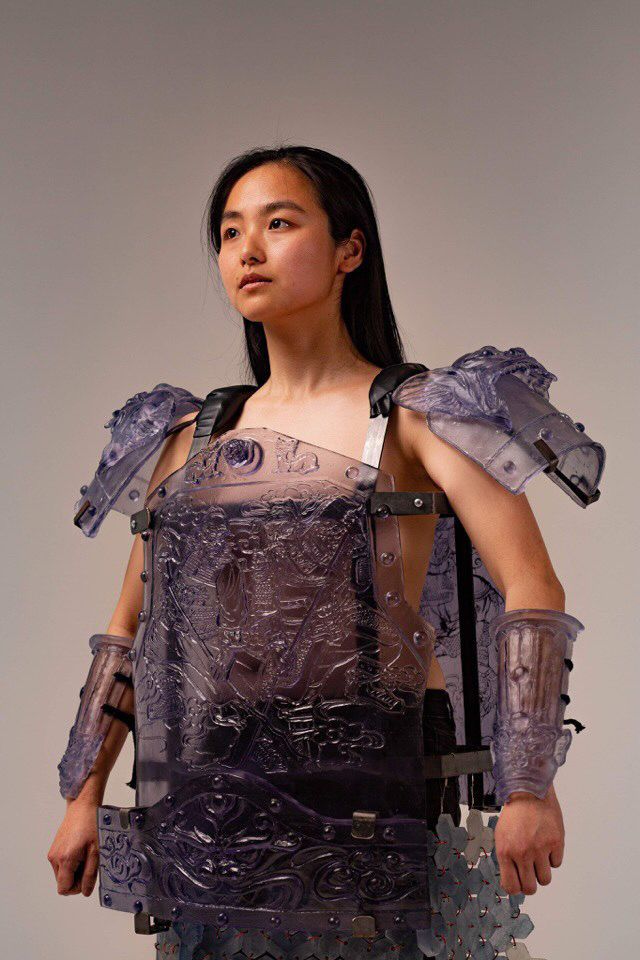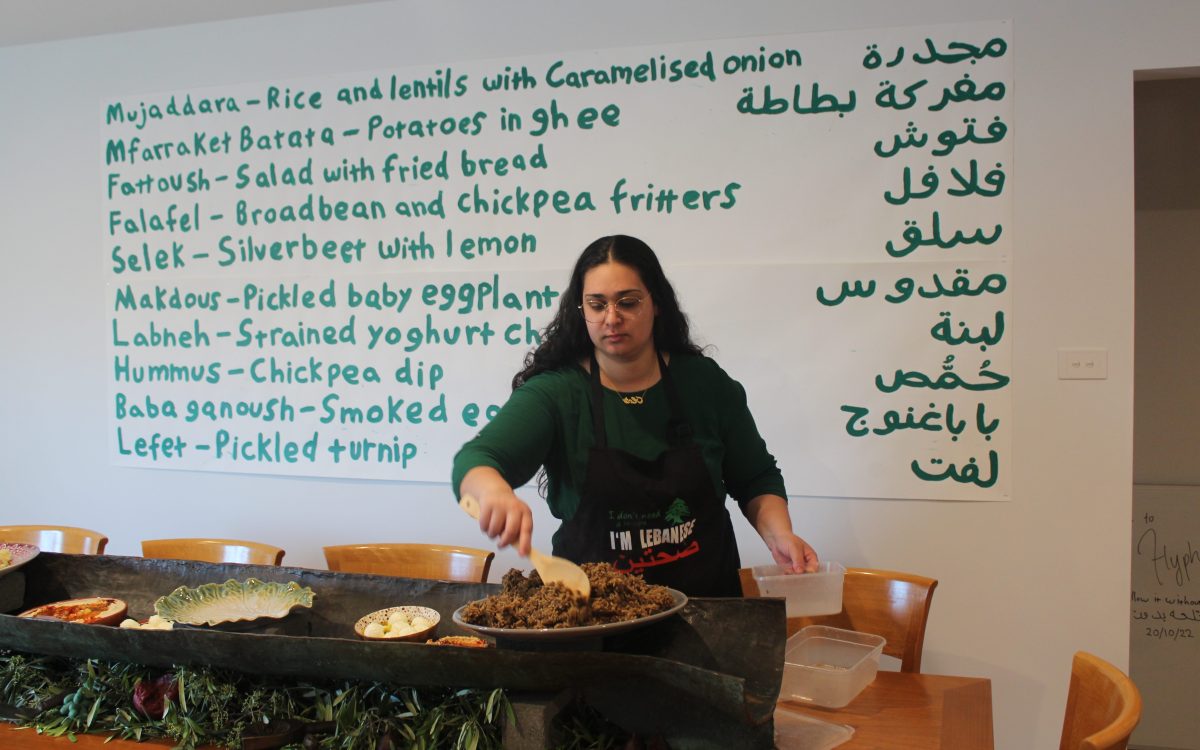This year as part of a new Equity-Builder initiative at Arts House, Dalit artist-curator Vishal Kumaraswamy is bringing together a group of critical voices to North Melbourne Town Hall. Under the banner of Okkoota ಒಕ್ಕೂಟ (alliance, gathering, assembly), together they will consider and present alternative approaches to inhabit the civic space, while offering new modes of engagement.
Okkoota ಒಕ್ಕೂಟ includes foremost diasporic voices such as Eugenia Lim, Phuong Ngo, Sacintya Mohini Simpson, Kirtika Kain and Subash Thebe Limbu.
The Equity-Builder program hands over Arts House’s reins to an artist-curator from a marginalised community over two years.
Arts House Co-Artistic Director Nithya Nagarajan tells ArtsHub about the goal of Equity-Builder: ‘I joined Arts House about a year ago and the Equity-Builder is really an equity and justice action plan that we’re working on, but we don’t want it to be a dry policy document – we want it to be operationalised into action and also a living document that can have ways for the community to keep us accountable.
‘It’s a mechanism to activate both internal and external levers to shift ourselves into a more equitable space. We’ve always had a pretty intersectional program, but then that does not translate into structural levers internally, to the communities that we are speaking for,’ explains Nagarajan.
In many ways, Kumaraswamy brings that external perspective alongside his years of experience as an independent curator operating outside of institutional frameworks, and from an anti-caste perspective.
Kumaraswamy says: ‘It’s interesting how similar institutional structures are in the arts, across multiple geographies, in terms of where the power lies… For me, it’s very much about thinking through, first, as an artist myself, what does it mean to come into a space with its own history; and what does the bureaucratic fabric of the interaction with an institution look like if you’re already coming from a disadvantaged position?
‘For me, knowing that the program is going to contribute to policy writing and development, that it’s going to be embedded within that arc of the institution… As somebody who doesn’t live in Melbourne, it may not affect me on a daily basis, but I know that if we’re able to get to a place where I can demonstrate together with an institution that we can actually change how these thing work [it’s going to have a bigger impact].’
Read: When a commission is spent on engagement, not outcome
How to open up spaces for marginalised communities
Based in Bengalore (or Bengaluru), Kumaraswamy comes from the Dalit community or “Untouchable”, where his lived experience of power and oppression informs his curatorial approach in scope beyond art itself.
He continues: ‘There is a very strong effort to homogenise the identity of what it means to be a South Asian artist or an Indian artist based in Bangalore. There is a demand to assimilate into the larger, more accepted general narrative, which has meant that my practice has predominately existed outside the country.
‘It’s very different to enter a space where there is no awareness of caste as a social system of power, versus an ignorance and denial, which is kind of where we are in South Asia… It’s meant that reaching out to an institution and working with an institution outside the country was an opportunity to reframe how particular populations from my region are perceived and the inherent structures of power they are bringing with them.’
Furthermore, Kumaraswamy says Okkoota ಒಕ್ಕೂಟ (alliance, gathering, assembly)’s framework is about ‘allowing space for the artists to assert their own presence’.
The works and the space they take up are shaped by the individual practices of 12 artists, which will span Arts House – from the main hall to in-between spaces.
Many of these artists are people Kumaraswamy has followed over the years, including Yakthung (Limbu) artist Subash Thebe Limbu, who was like a mentor to Kumaraswamy as one of the few South Asians he knew while doing his MA at Central Saint Martins, University of the Arts London.
Read: APT10 artists talk future
Limbu will bring back his film NINGWASUM (2021), first shown as part of APT10, which presents ‘an alternative version of what the future might look like for his community,’ says Kumaraswamy.
‘Collectively, I’m using anti-caste principles of organisations and gatherings, and thinking about the role of art in educating audiences and helping broaden perspectives.’
The “Untouchables” are constantly required to navigate the power dynamics of public and civic spaces – spaces that are restricted to them on a daily basis. However, these rules can be suspended during festivals or community gatherings.

As suggested by the title, this gathering is a key pillar of Okkoota. ‘The event is not the end result, the importance is the gathering of these many bodies and minds, and the presence of the community at scale in a space that is otherwise not,’ says Kumaraswamy.
The outcome of the event will depend on who takes part in this gathering, he says. ‘When they are inhabiting this space, do we hear their voices? Do we see that presence? Do we see the presence of other bodies, of other identities, does any of that resonate, and how do I go about addressing the gaps?’
Public programming is as important as the exhibition and artworks. For Okkoota, this takes the form of curator tours and artist panels, but also communal meals to transform a civic space into one that is intimate and welcoming.
This act of nourishment and community gathering can be seen in Rirkrit Tiravanija’s home-cooked Thai meals at 303 Gallery in New York in 1992, to more recently the social kitchen by Britto Arts Trust at documenta fifteen and Next Wave’s series of Radical Hospitality programs.
For Kumaraswamy, it’s also about providing access points to art for different audiences that may have been previously excluded.
‘We have to demonstrate the art for somebody who is just mildly interested in the arts and help them understand what that output looks like… The artists’ practices are important, but also what is the purpose that they’re serving for the community? That’s the primary responsibility that we need to reiterate in every strand of the thinking.’
From an institution’s perspective, Nagarajan says programs like these ‘demands the institution to behave differently to enable diverse audiences to come’.
She concludes: ‘The power that Vishal is able to take as a guest curator and not embroiled in this institutional structure, is to place a demand with agency and volume.’
Okkoota ಒಕ್ಕೂಟ,(alliance, gathering, assembly) runs from 11-23 April at Arts House.
The participating artists are: Eddie Abd, Lara Chamas, Shareeka Helaluddin, Kirtika Kain, Eugenia Lim, Sancintya Mohini Simpson, Nikhil Nagaraj, Phuong Ngo, Rahee Punyashloka, NC Qin, Moonis Shah and Subash Thebe Limbu.





